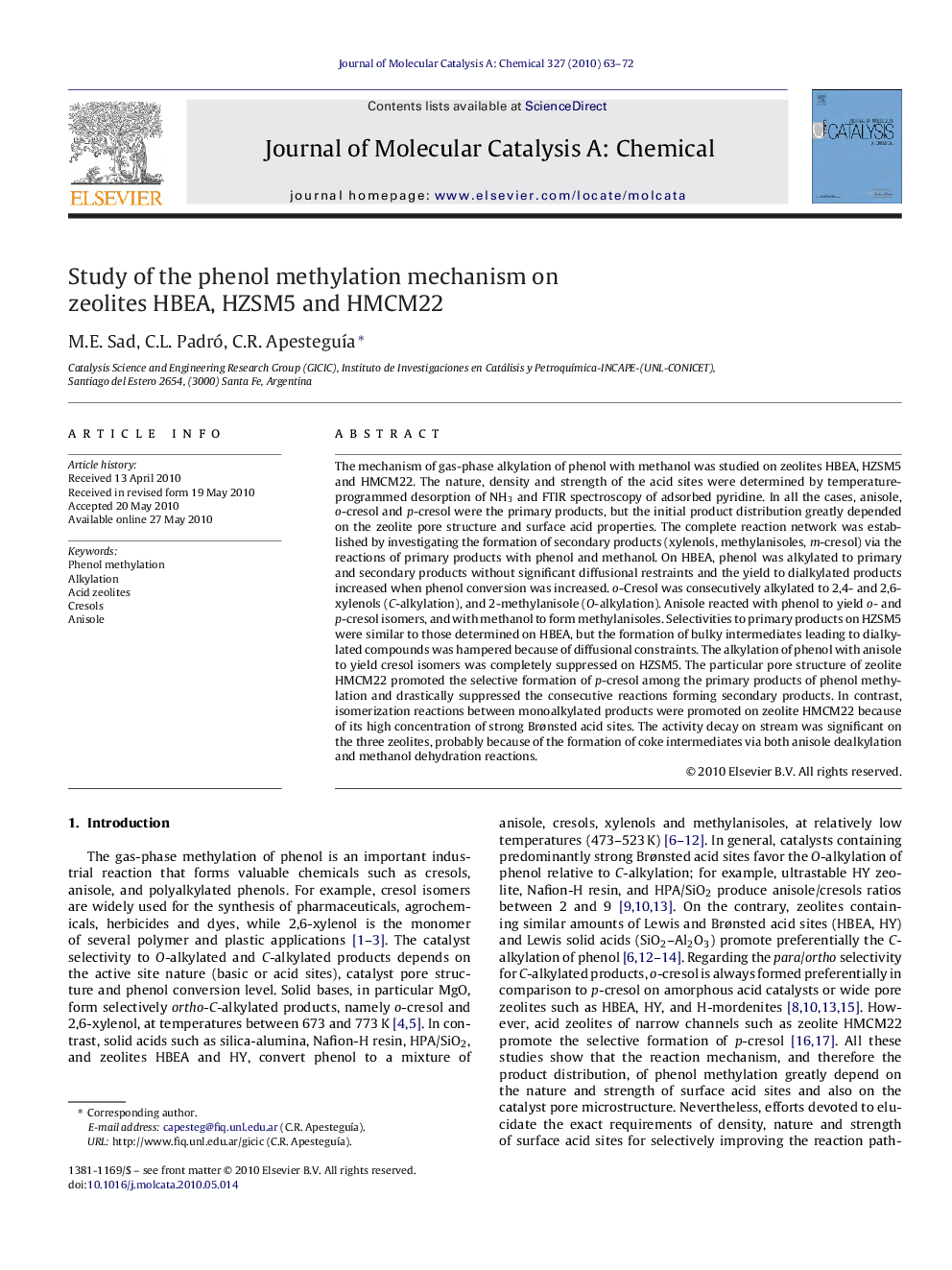| کد مقاله | کد نشریه | سال انتشار | مقاله انگلیسی | نسخه تمام متن |
|---|---|---|---|---|
| 66712 | 48446 | 2010 | 10 صفحه PDF | دانلود رایگان |

The mechanism of gas-phase alkylation of phenol with methanol was studied on zeolites HBEA, HZSM5 and HMCM22. The nature, density and strength of the acid sites were determined by temperature-programmed desorption of NH3 and FTIR spectroscopy of adsorbed pyridine. In all the cases, anisole, o-cresol and p-cresol were the primary products, but the initial product distribution greatly depended on the zeolite pore structure and surface acid properties. The complete reaction network was established by investigating the formation of secondary products (xylenols, methylanisoles, m-cresol) via the reactions of primary products with phenol and methanol. On HBEA, phenol was alkylated to primary and secondary products without significant diffusional restraints and the yield to dialkylated products increased when phenol conversion was increased. o-Cresol was consecutively alkylated to 2,4- and 2,6-xylenols (C-alkylation), and 2-methylanisole (O-alkylation). Anisole reacted with phenol to yield o- and p-cresol isomers, and with methanol to form methylanisoles. Selectivities to primary products on HZSM5 were similar to those determined on HBEA, but the formation of bulky intermediates leading to dialkylated compounds was hampered because of diffusional constraints. The alkylation of phenol with anisole to yield cresol isomers was completely suppressed on HZSM5. The particular pore structure of zeolite HMCM22 promoted the selective formation of p-cresol among the primary products of phenol methylation and drastically suppressed the consecutive reactions forming secondary products. In contrast, isomerization reactions between monoalkylated products were promoted on zeolite HMCM22 because of its high concentration of strong Brønsted acid sites. The activity decay on stream was significant on the three zeolites, probably because of the formation of coke intermediates via both anisole dealkylation and methanol dehydration reactions.
The reaction network of phenol methylation was investigated on zeolites HBEA, HZSM5 and HMCM22. Reaction pathways to primary (anisole, o-cresol, p-cresol) and secondary (m-cresol, xylenols, methylanisoles) products were established.Figure optionsDownload high-quality image (126 K)Download as PowerPoint slide
Journal: Journal of Molecular Catalysis A: Chemical - Volume 327, Issues 1–2, 15 July 2010, Pages 63–72